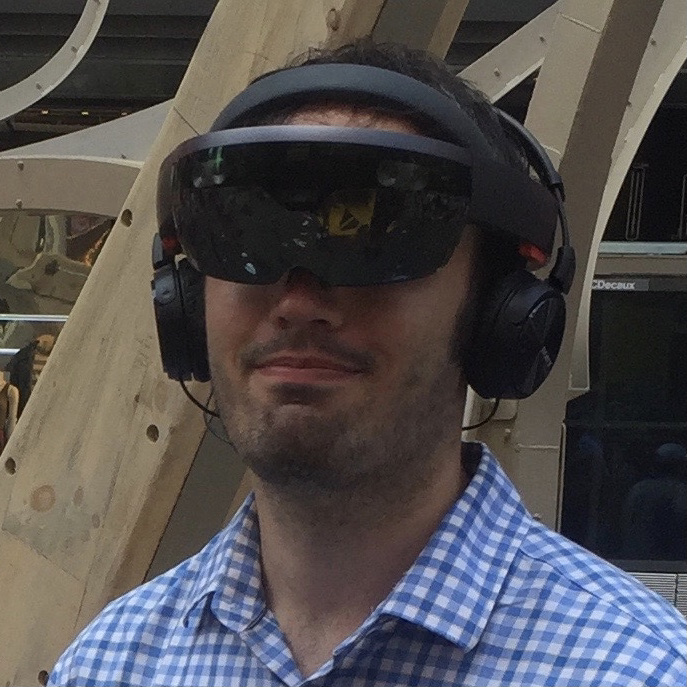Solar eclipse 2017 live stream: watch the rare total solar eclipse today
Solar eclipse 2017 time plus how to watch it from anywhere
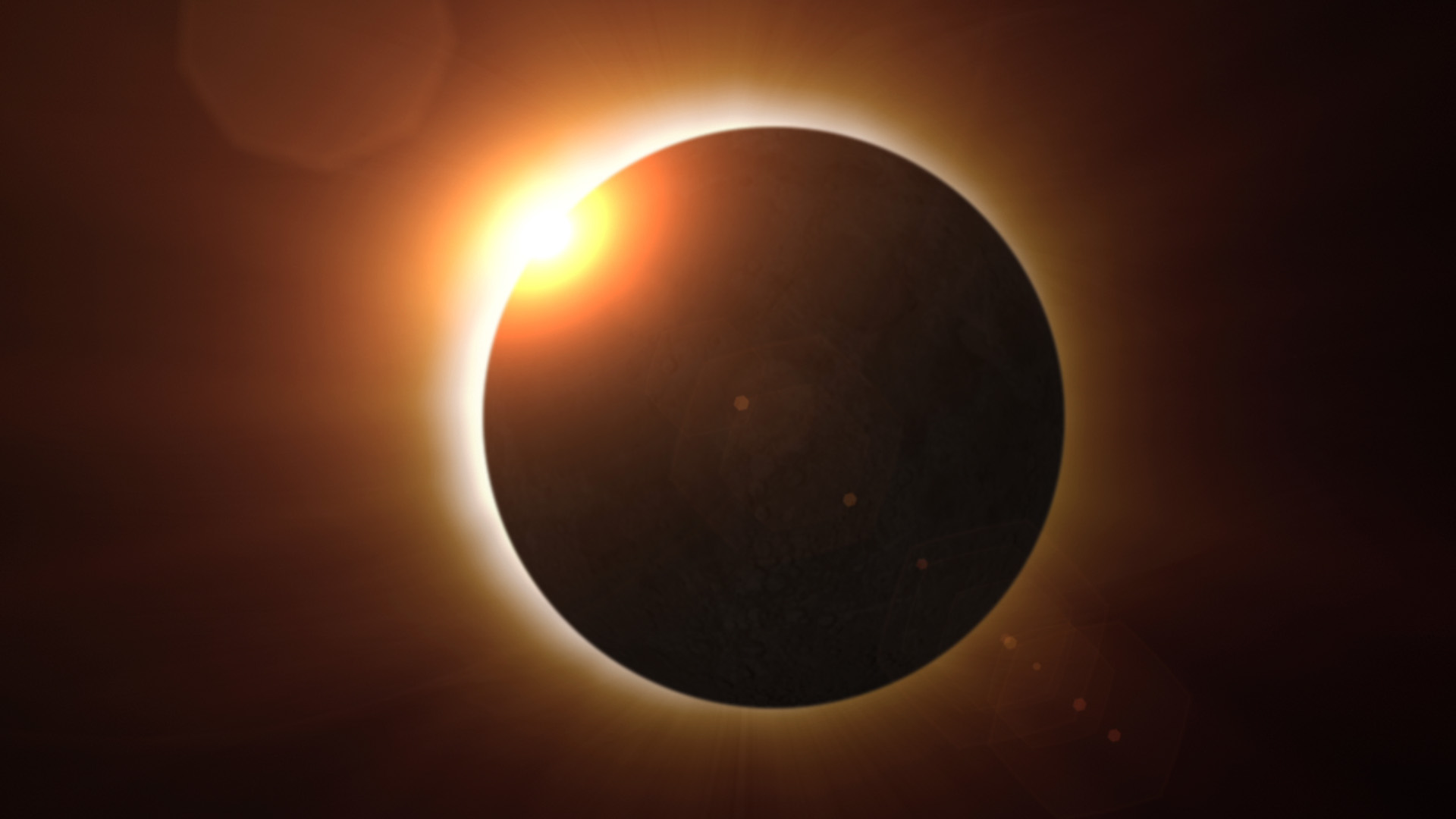
Don't miss a minute of the eclipse! NASA has a full plate of programming totality, and you can watch it all below:
Today, a string of US locales from Madras, Oregon to Columbia, South Carolina will experience a total solar eclipse — and a figurative “zombie apocalypse” of 12 million residents and at least 7 million tourists crowding highways and overwhelming data networks to witness the rare event.
People across North America who aren't in the eclipse's narrow 70 mile-wide path of totality will see a partial eclipse, and some in the UK and Western Europe will catch a sliver of the sun blocked just before sunset.
This eclipse is an extremely rare occurance — the last total eclipse to go from US coast to US coast was in 1918 — so it's not to be missed no matter if you live in North America or elsewhere.
If you want to watch the eclipse happen live, don’t worry if you're not in the path of totality, or aren't in the US. There are a surplus of live stream feeds, scientific commentary, and social media accounts that will cover the eclipse from beginning to end, and we’re here to help you find the best ones.
Solar eclipse 2017 time: When does it begin?
The solar eclipse first makes landfall in Lincoln Beach, Oregon at 9:05 am PT on Monday (12:05pm EST / 5:05 pm GMT / 2:05 am AEST on Tuesday).
Totality will begin in Oregon at 10:16am PT (1:16pm ET / 6:16pm GMT / 3:16am AEST on Tuesday). For 90 minutes, the sweet spot of totality will travel through 12 states and hit the Atlantic off of South Carolina at 11:48 am PT (2:48pm ET / 7:48 pm GMT / 4:48 am AEST on Tuesday).
Get daily insight, inspiration and deals in your inbox
Sign up for breaking news, reviews, opinion, top tech deals, and more.
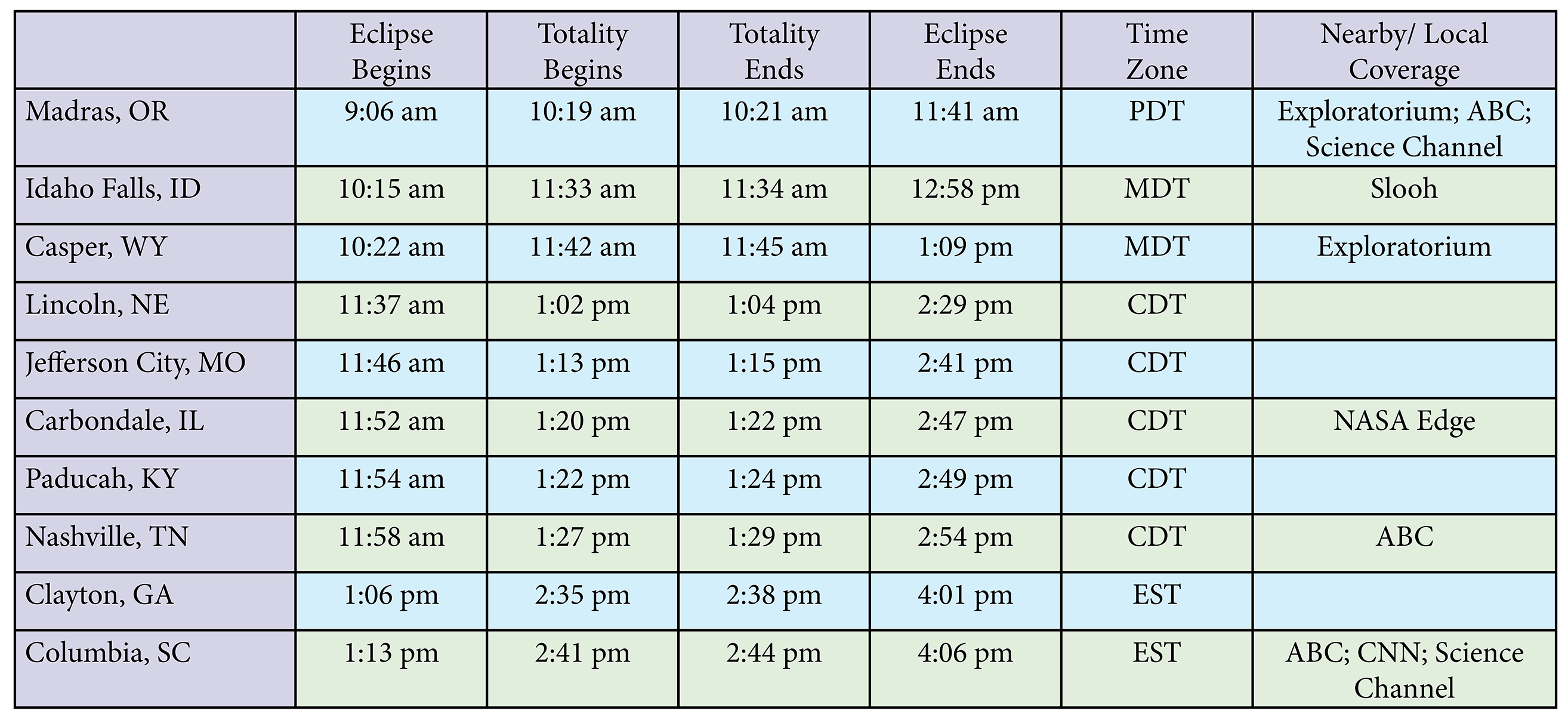
Complete darkness will last for over two minutes in the path of totality (Carbondale, Illinois will have the longest time of darkness at two minutes and 40 seconds).
There will be over 90 minutes of eclipse action from the first point of contact until the moon's shadow exits the US. NASA has a great grid showing the beginning and end time of the eclipse in the 12 states of totality.
NASA solar eclipse live streams
When it comes to covering the solar eclipse, NASA has brought its monitoring tech and astronomy experts out in force.
From 9am –1pm PT on Monday, NASA will film from 12 cities for its feature “Eclipse Across America: Through the Eyes of NASA”. The program will air on NASA TV, Facebook Live, YouTube, and Twitch.
Using their space-worthy telescopes and 50 GPS satellite balloons fitted with video cameras at 100,000 feet, NASA will provide the best hi-res shots of the eclipse from high altitudes that you could hope for.
The space agency is even employing everything from the International Space Station to a Gulfstream jet and a Coast Guard ship to film the eclipse’s progress from every perceivable angle.
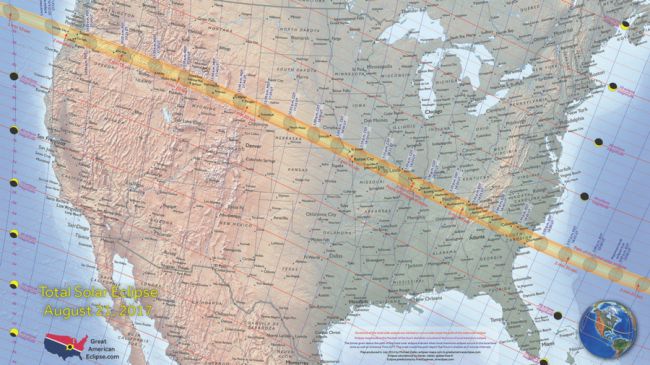
For a more informative, less scripted experience, consider NASA Edge, a 4.5-hour “Megacast” based in Carbondale that starts at 8:45am PT (also on Facebook Live).
Hosts like NASA Senior Research Scientist Eric Christian and “Mr. Eclipse” Fred Espenak will explain the science behind NASA’s live feeds, interview other eclipse scientists, and answer viewers’ burning questions from @NASA_EDGE.
Watch the solar eclipse on TV, online and in VR
NASA’s the biggest kid on the block covering the solar eclipse, but other major TV channels are planning content that will virtually place you in the thick of the action.
CNN is targeting virtual reality buffs and 4K TV owners, providing high-def, 360-degree videos at seven US locations starting at 10 am PT.
Astronaut Mark Kelly and Space and Science correspondent Rachel Crane will host CNN's coverage. Watch their standard stream at CNN.com/eclipse, or go to CNN's Facebook page (or your VR headset) for 360-degree videos as the shadow passes each city.
ABC’s two-hour, multi-city broadcast of the eclipse — hosted by David Muir of World News Tonight — will air on ABC live, Facebook Live and YouTube.
Along with viewing party coverage in Oregon, Tennessee and other US cities, the ABC's coverage will feature VR and time-lapse video experiences online.
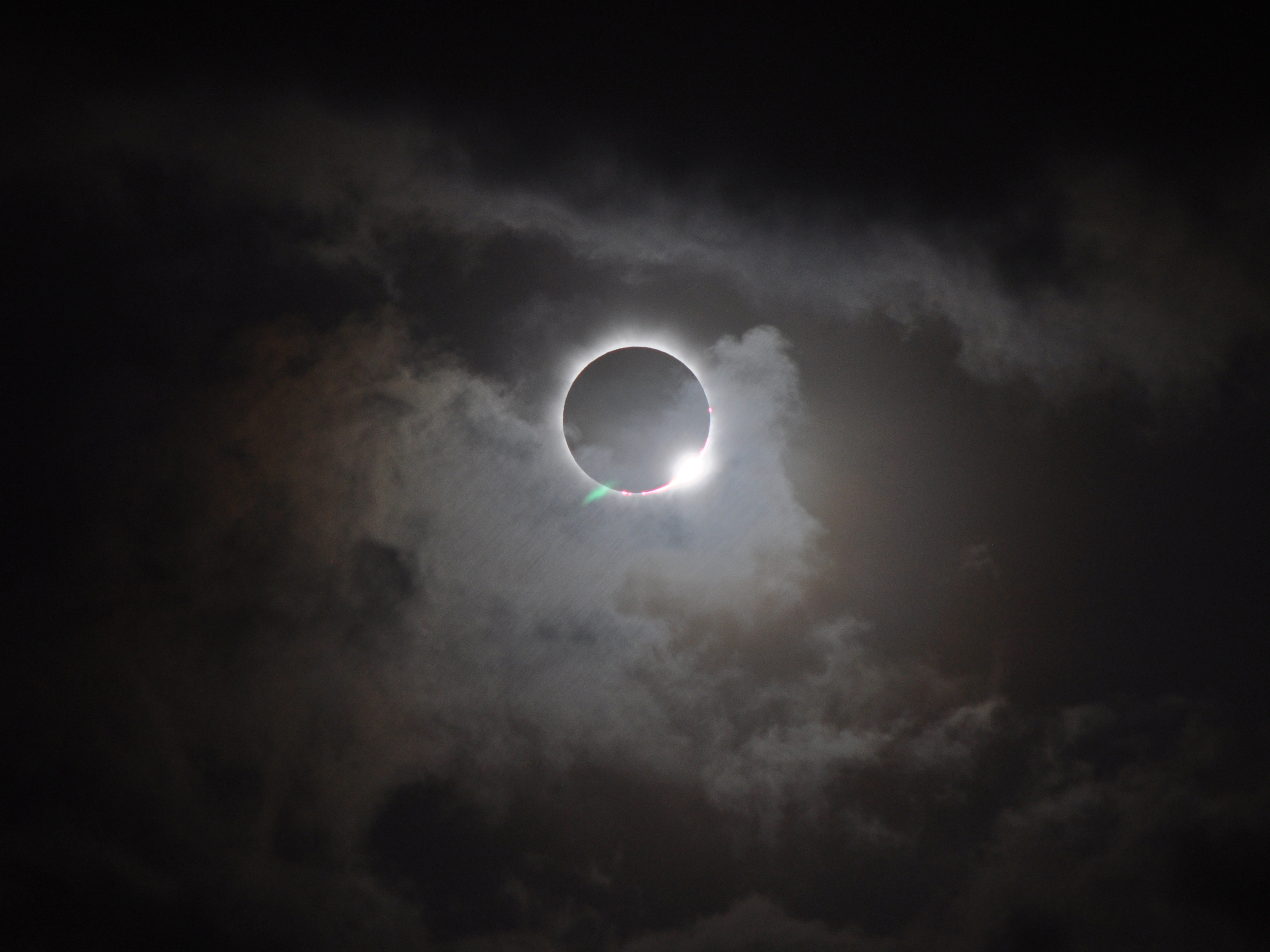
The Weather Channel’s also pulling out some fun bells and whistles for its solar eclipse segment, “Chasing Eclipse 2017”.
The channel will use high-resolution and aerial drone footage filmed by meteorologists across the path of totality, and the footage will apparently use augmented reality to superimpose science facts into the live stream.
The show will include a "Red Bull Cliff Diving event” in the eclipse’s shadow, a “Fact Off” game show from the Part Time Genius podcast, and coverage of “eclipse weddings”. Check The Weather Channel's Twitter page, weather.com or the Weather Channel app for the live stream.
The best experts, fanatics and solar eclipse commentary
While the national channels are racing across continents to cover the eclipse, some of the smaller channels and astronomy communities are providing their own unique spins on eclipse coverage that will keep you well informed.
Slooh, a community of amateur astronomers and telescope enthusiasts, airs its live stream from Idaho starting at 8:30 am PT, but the group is also hosting a three-day eclipse event, the “Slooh road trip”, starting on August 18.
Follow the event at @slooh as they cover the science, history, and spiritual culture surrounding eclipses. You can watch the event on Slooh's YouTube channel . Slooh also partnered with Univision for a Spanish-language simulcast on YouTube.
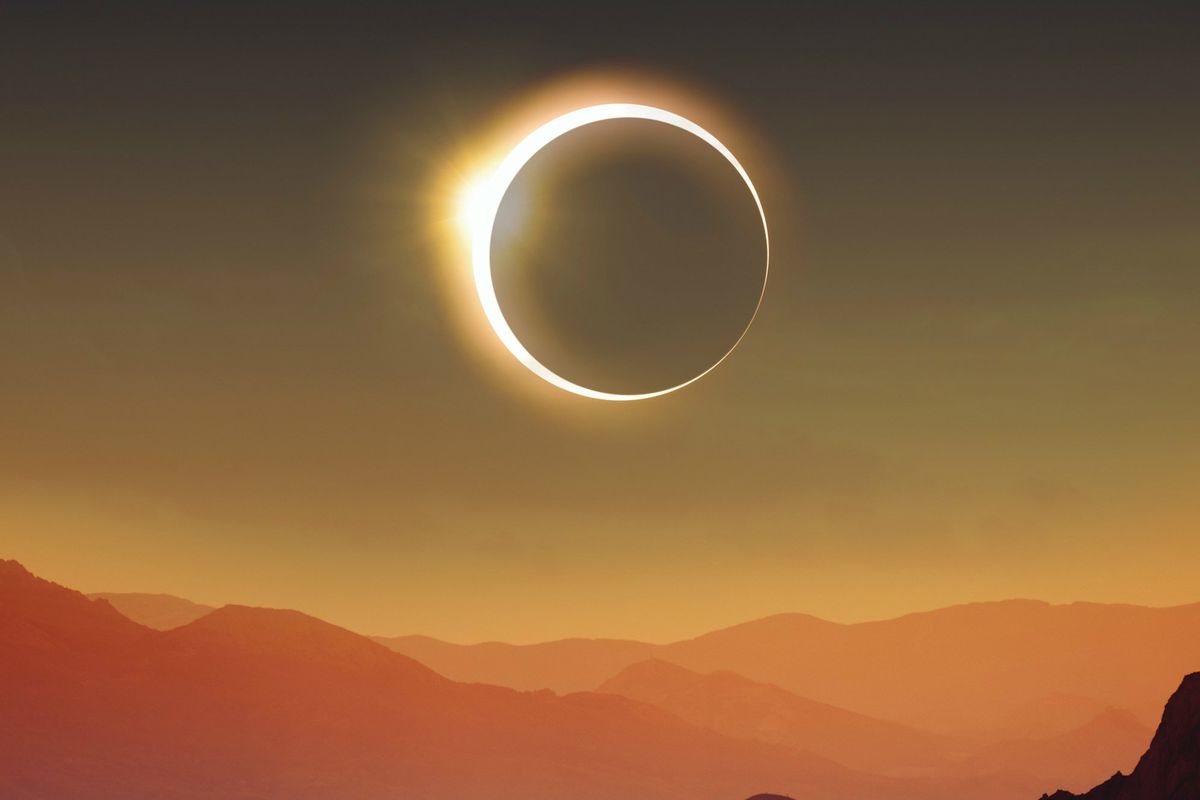
San Francisco’s Exploratorium museum will stream silent and narrated footage of the eclipse from Oregon and Wyoming for its live stream, with the narration provided by experienced “Eclipse Chasers”.
On the Exploratorium's official eclipse app, you’ll even be able to stream the museum’s eclipse “sonification” : musical group Kronos Quartet will be converting eclipse video data into sound for a three-hour live performance starting 9:15 am PT.
The Science Channel’s segment, “The Great American Eclipse”, starts at 9 am PT and can be found on their online stream or on Facebook Live. Hosted by retired astronaut Mike Massimino of Big Bang Theory fame, the show will combine footage from Oregon’s Lowell observatory with expert scientific commentary.
Who to follow on Twitter and Instagram during the solar eclipse 2017
As millions of people do their best to capture the perfect eclipse photo or video, you’ll also be able to find the best media from home simply by following some awesome social media channels on Twitter and Instagram.
For those of at work who can’t stream the event live, these channels will satisfy your eclipse cravings.
NASA, of course, should be your primary source of knowledge throughout the day. Follow @NASASun to fill your feed with eclipse-centric content.
The main @NASA profile and @NASAGoddard —the Goddard Space Flight Center’s channel with a focus on sun science — will also tweet out eclipse photos and facts throughout Monday.
And if you want a single hub for eclipse photos, NASA’s Flickr page will post eclipse totality and community event photos from people across the US.
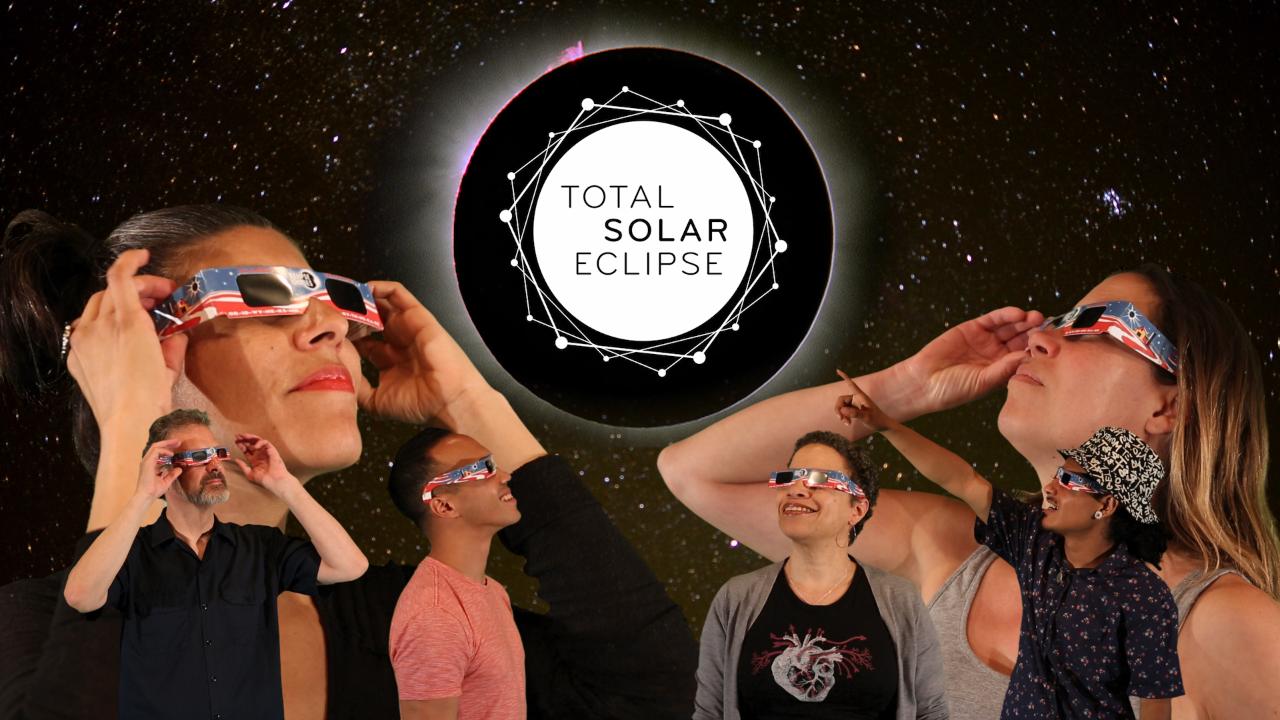
The Instagram accounts for @weatherchannel and co-hosts @stephanieabrams and @jencarfagno will be full of eclipse posts as they track the phenomenon.
Popular pop science site @spacedotcom will also aggregate eclipse photos for your enjoyment. Most promising, Alex Conu, author of How to Photograph a Total Solar Eclipse, will be posting his eclipse-chasing content at @alexconu.
Over on Twitter, the hashtag #Eclipse2017 is guaranteed to trend throughout the day with users’ photos and cool science info on eclipses.
The National Weather Service and Department of Interior will keep you apprised of weather conditions and eclipse safety tips at @nws and @interior. And World Science Festival founder Brian Greene is posting eclipse facts at @briangreene.
With so many ways to watch and join the conversation around the solar eclipse, it'll be hard to miss what will be one of the most watched, talked about and widely covered events in human history.
Top image credit: NASA/GSFC/CI Lab
Michael Hicks began his freelance writing career with TechRadar in 2016, covering emerging tech like VR and self-driving cars. Nowadays, he works as a staff editor for Android Central, but still writes occasional TR reviews, how-tos and explainers on phones, tablets, smart home devices, and other tech.
